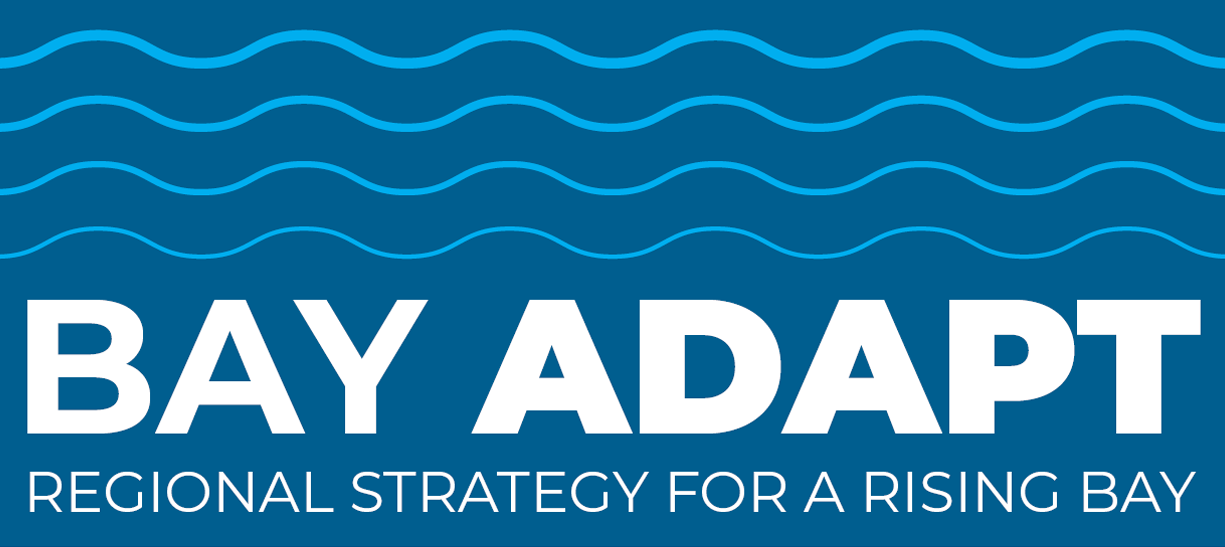Regional Shoreline Adaptation Plan
Ensuring governments and communities across the Bay Area are working together to adapt to rising sea levels.
About This Project
Project Overview
The Regional Shoreline Adaptation Plan (RSAP) was developed as a result of Senate Bill 272 (SB 272), which required the Bay Conservation and Development Commission (BCDC) to create Guidelines for local governments to follow when planning for the impacts of sea level rise along the San Francisco Bay shoreline. The RSAP aims to provide a coordinated, actionable plan for how the Bay Area can adapt to rising seas and ensure the long-term resilience of its communities, infrastructure, and ecosystems. This project began in January 2023 and concluded with its adoption by the BCDC Commission in December 2024. See the final version of the RSAP at www.bcdc.ca.gov/local-sea-level-rise-plans
The legislative mandate: SB 272
In 2023, the California State Legislature passed SB 272 (Laird), Sea level rise: planning and adaptation. SB 272 addressed the need for coordinated standardized sea level rise adaptation by requiring local governments along the San Francisco Bay shoreline to develop Subregional Shoreline Adaptation Plans. Subregional Shoreline Adaptation Plans are required to meet the Guidelines established by BCDC in the RSAP, ensuring effective and collaborative regional responses. SB 272 set in motion a collaborative process that brought together experts from a wide range of disciplines, local governments, environmental organizations, and affected communities to create the RSAP.
Creating the RSAP
The development of the RSAP was a structured and collaborative approach. Key milestones in the development of the RSAP included the establishment of the One Bay Vision, identification of Strategic Regional Priorities, and the creation of the Subregional Shoreline Adaptation Plan Guidelines. Each of these stages was informed by both expert insights and community input, ensuring that the RSAP would be equitable, inclusive, and aligned with the region’s values. A detailed list of leadership and advisory groups and events helped shape the RSAP is provided below:
Leadership and Advisory Groups
The Regional Shoreline Adaptation Plan is being guided and developed by a broad range range of stakeholders. This includes:
- BCDC Commission
- Rising Sea Level Commissioner Working Group
- Local Electeds Regional Task Force
- Advisory Group
- Broad Stakeholder Engagement, including partnerships with Community-Based Organizations
The Regional Shoreline Plan Advisory Group includes key individuals that provide subject matter expertise across core topics of the Regional Shoreline Adaptation Plan. Members of the Advisory Group include:
- Aaron Burnett, Canal Alliance
- Adam Varat, Port of San Francisco
- Adrian Covert, Bay Area Council
- Anthony Khalil, Bayview Hunters Point Community Advocates
- Ariana Rickard, Sonoma Land Trust
- Arthur Feinstein, Sierra Club
- Aundi Mevoli, San Francisco Baykeeper
- Brenda Goeden (she/her), BCDC
- Brian Holt, East Bay Regional Parks
- Carin High, Committee to Complete the Refuge
- Danielle Mieler, City of Alameda
- Diana Perez-Domencich^, Bay Area Air Quality Management District
- Ella McDougall, Ocean Protection Council
- Emily Corwin, Fairfield-Suisun Sewer District
- Jasneet Sharma, County of Santa Clara
- Jeanette Weisman, MTC/ABAG
- Jemma Williams, San Francisco Bay Joint Venture
- Jeremy Lowe, San Francisco Estuary Institute
- Jessica Davenport, State Coastal Conservancy
- John Bourgeois, Santa Clara Valley Water
- John Briscoe, Briscoe, Ivester & Bazel
- Josh Bradt, Bay Area Regional Collaborative
- Josh Quigley, Save the Bay
- JR DeLaRosa, Cal Office of Emergency Sservices
- Julie Beagle, US Army Corps of Engineers
- Karen Pierce^, San Francisco Department of Public Health
- Kate Hagemann, City of San Rafael
- Keta Price, The Hood Planner
- Kristina Hill, UC Berkeley
- Laura Feinstein, SPUR
- Makena Wong, San Mateo County Flood and Sea Level Rise Resiliency District (OneShoreline)
- Matt Maloney, MTC/ABAG
- Miyko Harris-Parker, San Francisquito Creek Joint Powers Authority
- Paul Campos, Building Industry Association
- Roger Leventhal, Marin County Flood Control District
- Ryan Hernandez, Contra Costa County Water Agency
- Sahrye Cohen, Environmental Protection Agency
- Stuart Siegel, SF Bay National Estuarine Research Reserve
- Tian Feng, Bay Area Regional Transit
- Todd Sax, Department of Toxic Substances Control California Environmental Protection Agency
- Vishal Ream-Rao, Caltrans
- Xavier Fernandez, Water Boards
^Individuals who signified they are not representing their agency/organization in an official capacity.
Events
In Fall 2023, over 250 members of the public engaged in the development of the RSAP’s One Bay Vision through community pop-up events. Staff attended ten pop-up events around the region to solicit input. Staff brought informational materials about the RSAP and asked participants to engage in a dot voting exercise to articulate their priorities for the Bay Area now and in the future. The pop-ups included the following:
• Suisun City (Solano County) – Rush Ranch
• Menlo Park (San Mateo County) – Belle Haven Neighborhood Block Party
• American Canyon (Napa County) – Pumpkin Path
• San Rafael (Marin County) – Free Movies in the Park – Canal District and Peacock Gap
• San Francisco – Youth Climate Environmental Justice Summit
• Newark (Alameda County) – Newark Days Community Information Faire
• Richmond (Contra Costa County) – Thrive Thursdays
• Oakland (Alameda County) – Land is Liberation
• Mountain View (Santa Clara County) – 40th anniversary of Shoreline at Mountain View Regional Park
The final version of One Bay Vision can be found in the final Regional Shoreline Adaptation Plan (RSAP), which can be accessed above.
Over 130 members of the public joined the first Public Workshop for the Regional Shoreline Adaptation Plan (RSAP) Guidelines. This meeting included presentations and virtual breakout room to discuss draft visions for Bay Area sea level rise adaptation. Meeting materials are available here:
– Want to learn more about the RSAP?
– How are we building on existing Bay Area work?
– What is SB272, the Laird Bill, and how does it affect our work?
In Winter 2024, staff hosted four focus groups targeted towards specific audiences/topic areas to generate specific discussion around areas with outstanding questions to resolve. These focus groups included:
• Consultants: What is the appropriate role for consultants to play in Subregional Shoreline Adaptation Plans and what feedback can they provide on the Guidelines based on their subject matter expertise and experience working on many different types of plans?
• Special Districts: Special districts are not required to prepare Subregional Shoreline Adaptation Plans according to SB 272, but many have prepared their own plans and/or will need to engage with multiple jurisdictions as they prepare their own plans since special districts own, operate, and/or manage many parts of the shoreline and assets along the shoreline. How can special districts most effectively engage in this process?
• Planners: How will Subregional Shoreline Adaptation Plans fit into the daily planning that staff already do? What kind of plan would best balance the additional burden on staff with maximum effectiveness? What can we learn from planners who have already done adaptation plans in the region?
• Vulnerability Assessments: What works and doesn’t work about the way cities do vulnerability assessments and how can the VA requirements maximize responsive adaptation strategies while minimizing excessive analysis?
Over 110 local planners and practitioners joined a workshop to learn about and discuss content within an early draft of the Regional Shoreline Adaptation Plan (RSAP). This meeting included presentations and virtual breakout room to discuss key themes and content on the draft Subregional Shoreline Adaptation Plan Guidelines. Meeting materials are available here:
Discussions on the RSAP draft content:
– A. Local Planning: Multi-Jurisdictional Planning and Plan Integration
– B. Meaningful Engagement: Equity Assessment and Outreach in Planning
– C. Vulnerability Assessment: Flood Hazards and Minimum Standards
– D. Adaptation Strategies: Land Use and Adaptation Strategy Standards
Discussions on future resources to support RSAP implementation:
– E. Mapping Needs: Developing an Online Mapping Platform
– F. Technical and Policy Assistance: Shaping BCDC’s Future Program
– G. Funding Plans and Projects: Learn about State Funding Available
In May-June 2024, staff also partnered with 5 community-based organizations around the region to develop place-based workshops to identify how the draft Regional Shoreline Adaptation Plan (RSAP) Guidelines would help different locations with differing conditions, levels of capacity, and progress on adaptation planning advance adaptation planning. These workshops took place in the following communities with the following partners:
• Suisun City – Sustainable Solano
• North Richmond – The Watershed Project
• San Rafael – Canal Alliance
• East Oakland – Hood Planning
• East Palo Alto – Climate Resilient Communities
Over 210 members of the public joined a webinar to learn about the draft Regional Shoreline Adaptation Plan (RSAP). This meeting included presentations on the context of the Regional Shoreline Adaptation Plan an orientation to the draft content, and reminders on how to provide public comment during the public comment period through October 18, 2024. Meeting materials are available here:
A key achievement in advancing the Bay Adapt Joint Platform
The Bay Adapt Joint Platform is a consensus-based strategy that includes 9 actions, and 21 tasks aimed at protecting people and both the natural and built environment from rising sea levels. The RSAP plays a crucial role in advancing the Bay Adapt Joint Platform by implementing several of its actions. It achieves this by developing detailed, localized plans for shoreline adaptation and guiding how different jurisdictions within the Bay Area can collaborate to plan and execute effective resilience strategies. Through its comprehensive and coordinated approach, the RSAP not only supports local and regional efforts but also serves as a model for similar collaborative initiatives throughout California, emphasizing the importance of multi-jurisdictional planning for climate resilience.
Learn More
With the RSAP complete, the focus now shifts to the implementation phase. Local governments are tasked with applying the Guidelines outlined in the RSAP into their Subregional Shoreline Adaptation Plans, addressing the unique needs of their communities.
For assistance with developing Subregional Shoreline Adaptation Plans, including clarifying who is required to create one, understanding the planning requirements, and navigating the legal approval process, visit the BCDC website. The site offers a wealth of resources, including detailed guidelines, step-by-step instructions, funding opportunities, and personalized support from Subregional Liaisons to guide you through every phase of plan development and ensure successful implementation.
To learn more about implementation please visit www. bcdc.ca.gov/local-sea-level-rise-plans.
Funding is available for local governments to support the creation of Subregional Shoreline Adaptation Plans. Visit the Ocean Protection Council’s SB 1 Grant program to learn more: SB 1 Funding – California Ocean Protection Council
Technical Assistance is available support local, regional, and tribal governments in preparing and submitting competitive applications to the SB 1 Grant Program. The TA Program aims to service and support successful funding proposals for eligible applicants, specifically:
– Environmental Justice Communities
– Federally Recognized Tribes or Tribal Partners
– Small and Rural Communities
– Communities with other locally-specific barriers to sea level rise (SLR) adaptation planning.
Project Update
RSAP Atlas will be released this Spring 2025!
The RSAP Atlas is an online mapping tool built to support local governments, communities, and consultants in creating Plans. The Atlas will provide access to regionally consistent datasets on existing conditions, coastal hazards, Strategic Regional Priorities, assets at risk of flood exposure, and support for adaptation strategies. The RSAP Atlas will allow users to:
- Explore coastal hazards
- Export jurisdiction-specific submittals and summaries
- Download GIS datasets
The Atlas will provide access to the majority of data required to complete a Plan. However, users are responsible for reviewing, validating, and supplementing this regional analysis with local data to ensure compliance with the RSAP Guidelines.
Project Update
Timeline
-
Project Kickoff
January 2023
-
Consultant Onboarding
February - June 2023
-
One Bay Vision
July - October 2023
-
Subregional Shoreline Adaptation Plans
November 2023 -
February 2024 -
Guidelines and Standards
March - August 2024
-
RSAP Public Comment Period and Public Hearing
September - October
2024 -
BCDC Commission Vote for Adoption
November - December
2024 -
RSAP Mapping Platform
May 2025
Questions or Comments?
Contact Jaclyn Perrin-Martinez (Climate Adaptation Planning Manager, Project Manager of the RSAP)
Get Involved
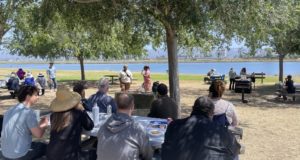
Workshop Recaps: Engaging Communities through Local Workshops on Sea Level Rise in the Bay Area
BCDC partnered with five Community-Based Organizations to co-host workshops in Bay Area shoreline communities most vulnerable to sea level rise.
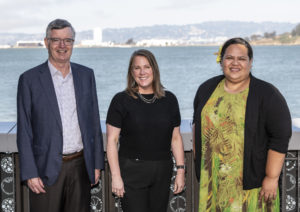
Meet our Bay Adapt Award Recipients!
BCDC’s Bay Adapt awards honors exemplary climate change leaders who are making significant progress in addressing the critical challenges posed by rising sea levels.

Partnering with Five Bay Area Community Organizations to Build Local and Regional Resilience
As sea level rise becomes a more urgent concern around the Bay Area, community organizations are rising to the challenge…
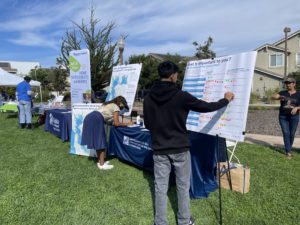
Why is Equity Important for Sea Level Rise Adaptation?
In the Bay Area, social equity and sea level rise are inextricably tied. Marginalized communities such as San Rafael’s Canal neighborhood, East Palo Alto, and the flatlands of Oakland sit right on the Bay’s shoreline.
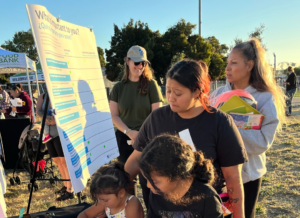
RSAP’s One Bay Vision: A Resilient Future for Bay Area Communities
The Bay Area is a beautiful, diverse place. The region’s communities have many different priorities, including building affordable housing, cleaning up shoreline contamination, restoring tidal wetlands, and more.
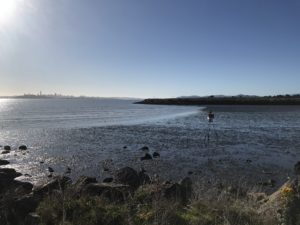
A Student’s View of the Shoreline
A Student’s View of the Shoreline Add page content here. I spent this summer as BCDC’s Adapting to Rising Tides Summer 2023 Intern with California State University’s Council of Ocean
